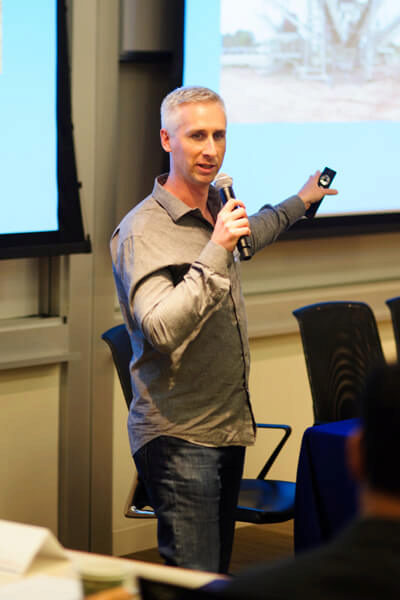When is a failure not really a failure?
Nate Fink of Microsoft Yammer argues that “the only failure is failure to learn something actionable.” As director of engineering, he faced the challenge of changing his team’s organizational culture to meet the rapid cycle times that software production demands. A key first step was to systematically, proactively redefine failure within the team. Only by becoming comfortable with an element of uncertainty could people feel safe to forgo the usual months of planning and take creative risks.
Fink spoke with the Mack Institute about how organizations can spur innovation by shifting from long-term planning to short cycles of testing and experimentation. An edited transcript of the conversation follows.

I work for Yammer and we are founded on bringing consumer software principles into the enterprise space, and enterprise software has always been delivered on very long cycles. It takes two to three years (plus a couple of years) for enterprises to go and deploy that software. And consumer software, on the other hand, is built on very, very short cycles: getting things out daily, weekly, monthly, getting rapid feedback, adjusting based on that. What that causes is to change completely how you go and organize and build things for that world. You stop doing six months of planning because that would be ridiculous. You want to get things out very, very quickly and just test them and see how you can learn quickly.
And so what I’ve been working on the most is how do we organize, how do we design our processes and systems to create that culture of learning, adjusting and shifting from planning to experimentation?
One of the ideas I’m going to talk about is what we often start with: How do we design a culture for collaboration and creativity? We forget some of the systemic blockers that are in place, and the number one thing that most impedes our ability for people inside of the company to be creative and collaborative and to innovate is that we’re on very, very long cycle times. There are a lot of things that are in place that prevent us from being faster. One of the biggest is sort of fear of being wrong – fear of not adhering to your long-term plan.
I took my whole team and transitioned them from a three year planning cycle and delivery cycle to being able to deliver things within days, weeks, months. One of the things that we had to do was train them out of all these modes where they wanted to go and do six months of planning first and be exactly right. One of the things we had to do was start celebrating failure as learning, and so what we did was we redefined failure. The only failure is failure to learn something actionable from the thing that you’re delivering. So, we started getting people up in front of the entire team saying at the end of every single thing we tried: What happened? What did we learn? What went right? What went wrong? What would we adjust for next time?
“The very most important thing is for organizations to create a culture where it’s okay for people to try new things, even if they’re not 100% guaranteed to succeed.”
Like most of our organizations, people are very fearful about not delivering on their commitments, not delivering on their plan. We all want to be able to go the executive team and say, “I’m going to deliver this, I’m going to deliver this, I’m going to deliver this and it’s going to take me six months to a year and here’s all the results you’re going to get.” And in today’s world, we just don’t know. I would argue that even in yesterday’s world, we didn’t know for sure what results those things would deliver. Today what we’d want is for people to be able to have a long term vision, direction that they’d want to take things, but then be able to deliver in small batches that they can learn from and test in the actual market.
I think that the last major blocker for organizations is that once you can deliver quickly and you can measure your impact and you’ve got the team working — in a way where we’re going to try things out, we’re going to learn things, some of the things are going to work, some of the things are going to be wrong — the organization structure itself starts to hold teams back. The organizational structure is often a manifestation of a long range plan, and when work is tied up in the organizational hierarchy, it’s very hard to change that. It’s very hard to learn and adapt and so what we need is new organizational structures that will allow us to adjust the work we’re doing as we’re learning.
Yammer is designing software for the new world of work. Most old style organizations are very command-and-control, built on planning and hierarchy. That worked really well when organizations needed to design for efficiency and planning and predictability. In today’s world, things are changing too quickly and there’s important information that’s locked up in silos around the organization that we need to unlock. We need to connect people within the organization as easily as they can connect with their peers and colleagues outside of the company so information can travel, new ideas can be exchanged and creativity can flourish.
Fink spoke at the Mack Institute’s Spring Conference 2015. Browse more Mack Talks here.



